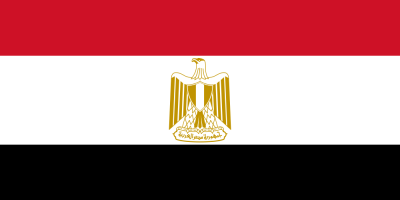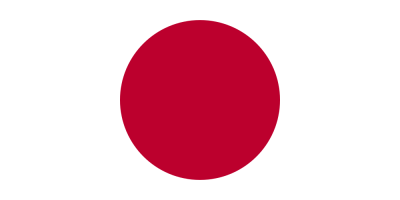Yemen flag color codes contains three horizontal stripes – red, white, and black. The vivid red epitomizes the blood spilled for freedom and independence. The white band signifies a bright future. The black stripe symbolizes the dark days now put to the past. For web developers and designers who want to integrate aspects of the Yemen flag into their projects, knowing the exact “Yemen flag color codes” in various formats is key. This article provides the Yemen flag color hexadecimal codes, RGB values, PANTONE colors, HSL, CMYK, HWB, and NCOL numbers. With this Yemen flag color code reference, you can easily match these colors in your digital or print works.
Table of Contents
What are the colors of Yemen flag?
The colors of the Yemen flag are:
Red – Represents the blood shed for independence and unity
White – Signifies a bright future
Black – Symbolizes the dark days now put to the past
So in summary, the three colors are:
- Red
- White
- Black
Yemen flag color codes & Color Names:
RED
| Color Model | Value |
|---|---|
| HTML | #ce1126 |
| HEX | ce1126 |
| RGB | 206, 17, 38 |
| PANTONE | 186 C |
| HSL | 352°, 84%, 45% |
| CMYK | 0%, 92%, 82%, 19% |
| HWB | 352°, 90%, 19% |
| NCOL | 0.00, 0.90, 0.19 |
WHITE
| Color Model | Value |
|---|---|
| HTML | #ffffff |
| HEX | ffffff |
| RGB | 255, 255, 255 |
| PANTONE | Safe |
| HSL | 0°, 0%, 100% |
| CMYK | 0%, 0%, 0%, 0% |
| HWB | 0°, 100%, 0% |
| NCOL | 0.00, 0.00, 1.00 |
BLACK
| Color Model | Value |
|---|---|
| HTML | #000000 |
| HEX | 000000 |
| RGB | 0, 0, 0 |
| PANTONE | Black |
| HSL | 0°, 0%, 0% |
| CMYK | 0%, 0%, 0%, 100% |
| HWB | 0°, 0%, 100% |
| NCOL | 0.00, 0.00, 0.00 |
What is the meaning of colors in the Yemen flag?
The colors of the Yemen flag have the following meanings:
Red – Represents the blood shed for independence and unity. The red symbolizes the sacrifices and bloodshed to achieve freedom from foreign control and unify North Yemen and South Yemen into one country.
White – Signifies a bright future. The white color expresses optimism and hope for a peaceful and prosperous future for Yemen.
Black – Symbolizes the dark days now put to the past. The black refers to the difficult times in Yemen’s history, now overcome through the establishing of an independent republic.
So in summary:
Red = Bloodshed and sacrifices for independence and unification
White = Hope and optimism for a bright future
Black = Difficult times in the past now overcome
The symbolic meaning behind the three colors connects to key aspects of Yemen’s history and aspirations as a nation.
Explore More Flag Colors:
FAQs: Frequently Asked Questions:
Is Yemen a rich or Poor country?
Yemen is considered one of the poorest countries in the world. The country has faced a protracted humanitarian crisis, including political instability, conflict, economic challenges, and food insecurity. The ongoing civil war has significantly impacted the economy and infrastructure, leading to widespread poverty and suffering among the population.
What is the problem with Yemen?
Yemen has faced numerous problems in recent years, some of the major ones are:
Civil war – Since 2014, Yemen has been engulfed in a civil war between Houthi rebels and the internationally recognized government led by President Abdrabbuh Mansur Hadi. The fighting has caused thousands of deaths, massive displacement, and infrastructure destruction.
Humanitarian crisis – The civil war has triggered an enormous humanitarian crisis with over 20 million Yemenis requiring humanitarian assistance. There is widespread hunger and malnutrition with some at risk of famine. Lack of access for aid exacerbates the crisis.
Economic devastation – Yemen’s economy has been devasted due to the war. Businesses, hospitals, roads and industry cannot operate properly leading to economic collapse. Savings have dried up for many Yemenis leading to poverty. Food and fuel prices also keep increasing.
Is Yemen currently in a war?
Yemen has been experiencing a protracted and complex conflict. The conflict involves various factions, including the internationally recognized government, Houthi rebels, and other groups. The situation is characterized by political instability, violence, and humanitarian challenges.
What is Yemen famous for?
Yemen, located on the southern tip of the Arabian Peninsula, has a rich cultural and historical heritage. Here are some aspects for which Yemen is historically and culturally significant:
Architecture: Yemen is known for its unique architecture, particularly the historic city of Sana’a. The city is recognized for its traditional Yemeni houses with distinct features such as tower houses (qasbahs) made of mud bricks.
Cuisine: Yemeni cuisine is diverse and flavorful, known for dishes such as mandi (a rice dish with meat), saltah (a traditional stew), and various types of bread, including malooga and kubaneh.
Coffee: Yemen is often considered one of the birthplaces of coffee. The country has a long history of coffee cultivation, and Yemeni coffee, often referred to as “Arabian coffee” or “Mocha,” is highly regarded for its unique flavor.
Frankincense and Myrrh: Yemen has a historical association with the production of frankincense and myrrh, aromatic resins derived from trees. These substances have been traded for centuries and are used in various cultural and religious practices.
Historical Sites: Yemen has several historical sites and ancient ruins, including the Old City of Sana’a (a UNESCO World Heritage Site), the ancient city of Shibam, and the archaeological site of Marib.
Cultural Heritage: Yemen has a rich cultural heritage, including traditional music, dance, and clothing. The country has a long history of poetry, and Yemeni poets have contributed significantly to Arabic literature.
Why is Yemen so rich?
Yemen is not generally considered a wealthy or economically prosperous country. Instead, Yemen faces significant economic challenges, exacerbated by political instability, conflict, and other factors. It’s important to note that the situation in Yemen can evolve, and my information might not reflect the most current developments.
Several factors contribute to Yemen’s economic challenges:
Conflict: Yemen has been facing a protracted civil war since 2014, involving various factions, including the internationally recognized government, Houthi rebels, and other groups. The conflict has led to widespread destruction of infrastructure, displacement of populations, and a humanitarian crisis.
Political Instability: Even before the current conflict, Yemen experienced political instability, including changes in leadership and governance challenges. Political unrest can negatively impact economic development and stability.
Humanitarian Crisis: The conflict has led to a severe humanitarian crisis, including food and water shortages, displacement, and inadequate healthcare. These factors contribute to the overall economic hardship and poverty in the country.
Can I travel to Yemen?
Yemen has been experiencing a protracted conflict, political instability, and a complex security situation. Due to the volatile conditions, many countries advise against all travel to Yemen, and there may be travel restrictions or advisories in place.
It’s important to note that travel information can change rapidly, and the situation in Yemen may have evolved since my last update. Therefore, I recommend checking with official government travel advisories and contacting relevant authorities for the most up-to-date information on travel to Yemen.
What is the capital of Yemen?
The capital of Yemen is Sana’a. Sana’a is one of the oldest continuously inhabited cities in the world and has a rich historical and cultural heritage. It served as the capital of North Yemen before the unification of North and South Yemen in 1990.
What language do Yemen speak?
Arabic is the official language of Yemen. The majority of the population in Yemen speaks Arabic, and it is used in government, education, and daily communication. Yemeni Arabic is the local dialect spoken in the country, and it may have regional variations. Additionally, some communities may use other languages or dialects, but Arabic is the predominant language spoken throughout Yemen.













